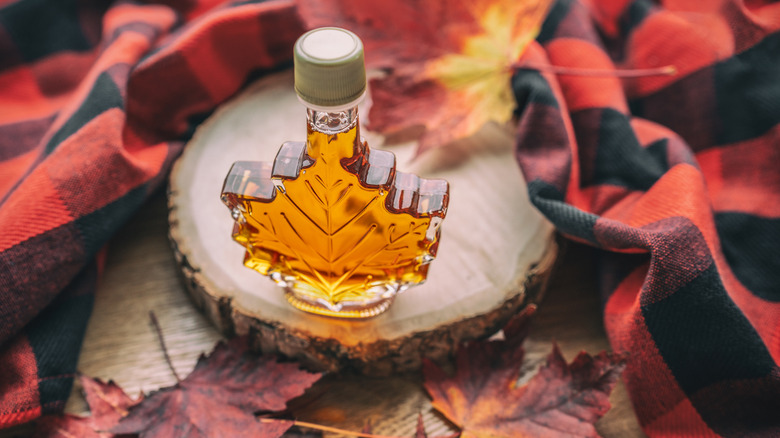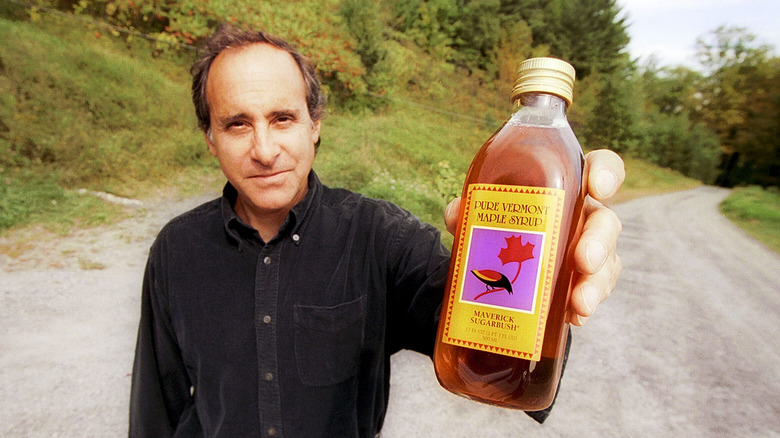Is Canadian Maple Syrup Really That Different From The American Kind?
Canada produces most of the world's maple syrup, so it would seem this country with the maple leaf emblem on its flag would also be home to the superior maple syrup. But is Canadian maple syrup all that different from American? The main difference between Canada's maple syrup and maple syrup from the United States is the product's grading system.
The Federation of Quebec Maple Syrup Producers alongside Agriculture and Agri-Food Canada have set standards that maple syrup makers are required to meet. The Canadian maple syrup grades were once Grade A, Grade B, and Commercial Grade. Now, there is only processing grade and Grade A, which encompasses a range of four maple syrup colors and flavor profiles: golden delicate taste, amber rich taste, dark robust taste, and very dark, strong taste. The four categories are separated by harvest time, with the first type coming from the earliest harvest and the fourth from the latest harvest. In order to be Grade A, Canadian maple syrup must be unfermented, sediment-free, uniform in color, free of cloudiness and haziness, and have "no objectionable odor or taste."
In America, the USDA has outlined three categories for maple syrup standards: Grade A, processing grade, and substandard. Like Canadian Grade A maple syrup, a U.S. Grade A maple syrup can range in color and flavor. However, the contents of the syrup must be less than or equal to 68.9% solids by weight, sediment and cloudiness-free, uniform in color, "have good flavor and odor and intensity of flavor normally associated with the color class," and must be "free from off flavors and odors considered as damage."
Fake maple syrup in America
Unlike Canadian maple syrup farmers, American maple syrup producers aren't required to meet USDA's grade standards. As you can imagine, this can lead to some issues with how maple syrup is sold. As the nation's proud maple syrup capital, the state of Vermont is fighting against inauthentic, low-quality maple syrup. In October 2025, the University of Vermont's Extension Maple Program received a grant for lab testing to ensure low-grade maple syrup isn't fraudulently marketed as Grade A maple syrup.
Many of the popular syrup brands you see on supermarket shelves aren't 'real' maple syrup. These products are usually labeled "pancake syrup," "breakfast syrup," "table syrup," or simply "syrup." Log Cabin syrup is made with corn syrup (or brown rice syrup if you buy the "all-natural" variety), while Mrs. Butterworth's is made with high fructose corn syrup. Real maple syrup will be labeled as such and should only have one ingredient. Outside of Vermont, you might get store-bought maple syrup labeled "Grade A" that doesn't technically meet the USDA standards.

